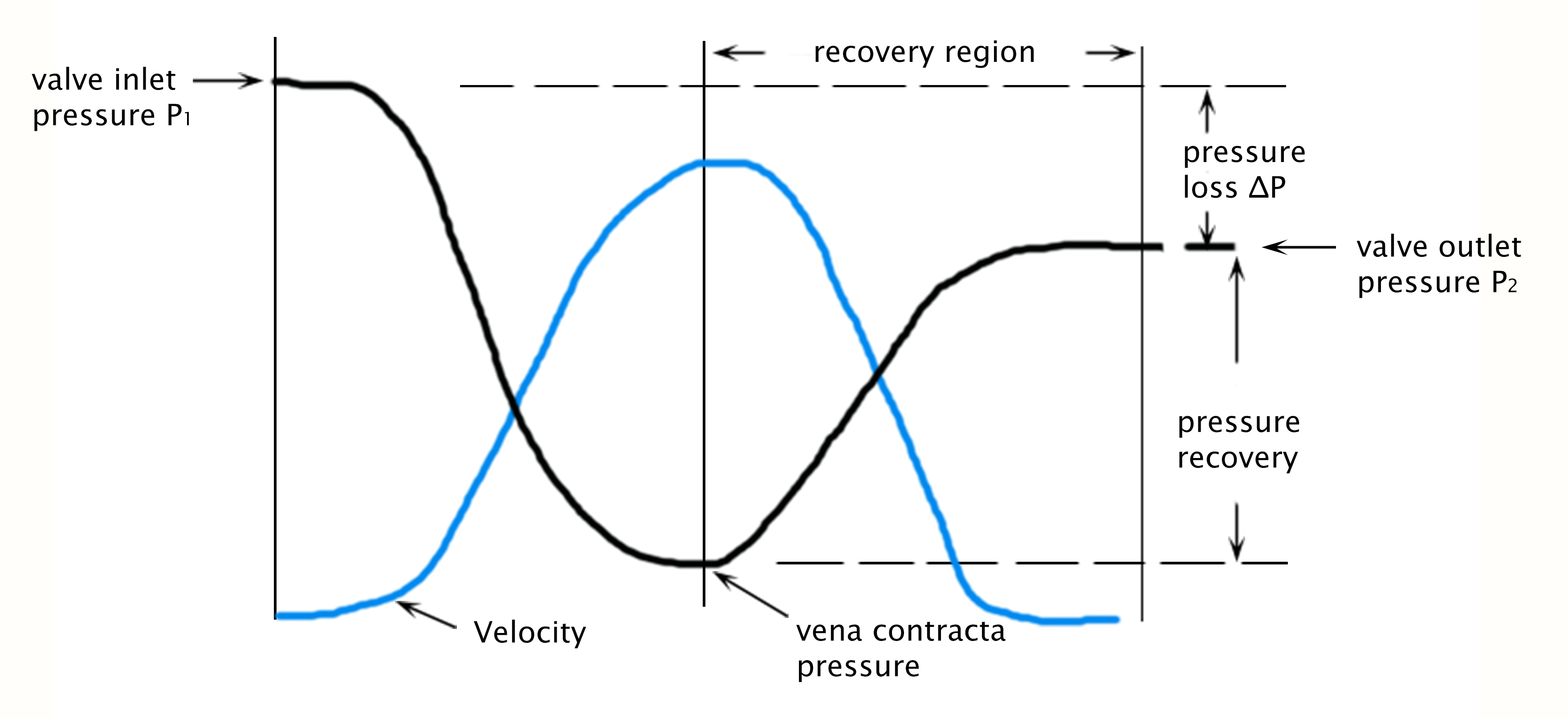Pressure Recovery Factor Explained
Read on to understand pressure recovery factory.
Cv is defined as the number of gallons per minute of water that will pass through a given flow restriction with a pressure drop of 1 psi and is a capacity index useful for rapidly and accurately estimating the required size of any fully opened valve in a flow system.
Example: a valve with Cv 25 fully opened allows 25 gpm of water to flow with a 1 psi pressure drop.
Fig. 1 Illustrates how velocity and pressure vary as fluid passes through a valve.

Figure 1
First, velocity increases, then decreases as it moves through the valve. It thus obeys the continuity principle which requires the velocity to increase when the area decreases for a uniform flow rate. This increased velocity in turn requires a lower pressure. The point of maximum fluid jet contraction — and thus lowest pressure — is called the vena contracta. Beyond this point, the flow area returns to its former value in the recovery region. It is in this region that most friction and turbulence losses occur, a fact that accounts for most of the pressure drop between P1 and P2. The difference between exit pressure P2 and pressure at the vena contracta is called pressure recovery. This is expressed as Pressure Recovery Factor (often abbreviated as “PRF” or “FL”) that is used to determine the true pressure drop across the valve seat, and to determine if cavitation is likely to occur.

